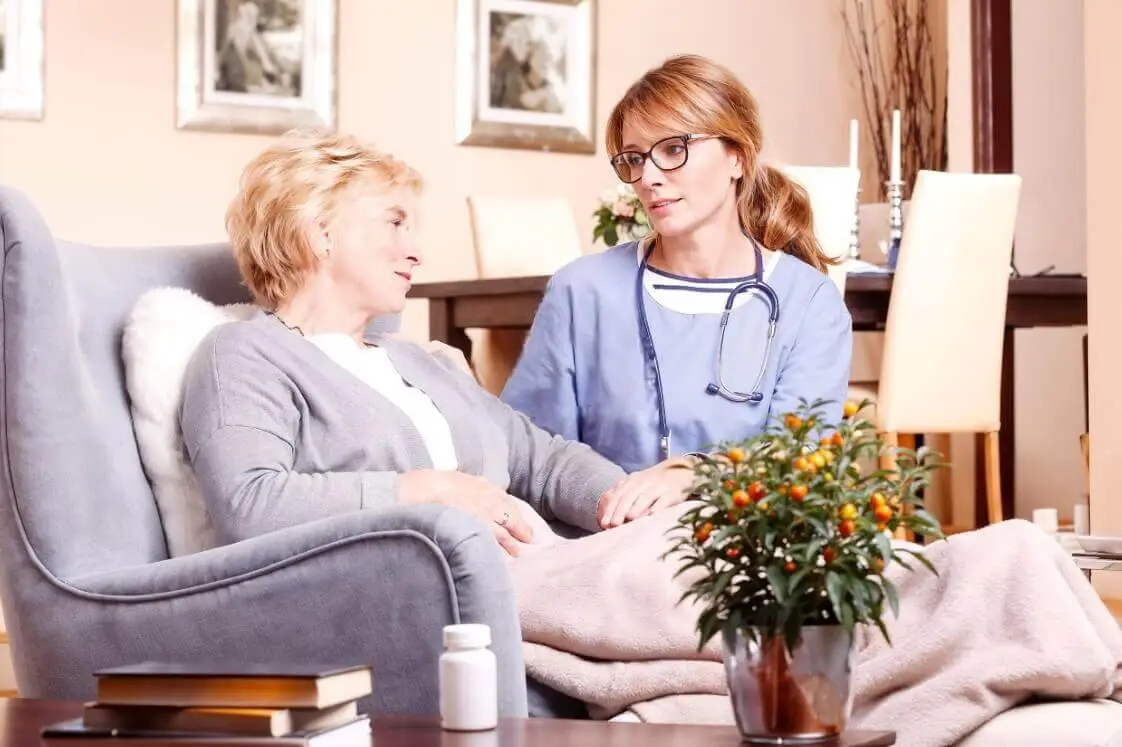How Family Photo Albums Connect Seniors and Caregivers
How Family Photo Albums Connect Seniors and Caregivers
Key Takeaways
- Family photo albums are collections of photos that capture the memories and stories of seniors and their loved ones.
- Family photo albums can benefit seniors by helping them to reminisce, preserve, and share their memories and stories and stimulating their cognitive, emotional, and social functions.
- Family photo albums can benefit caregivers by helping them to learn more about the seniors they care for and their personal history, preferences, and needs, as well as fostering a stronger bond and trust between them.
- Seniors and caregivers can create and use family photo albums in various ways, such as using physical or digital formats, organizing and displaying them, and engaging with them through activities or questions.
Family photo albums are more than just collections of photos. They are also valuable sources of memories and stories that reflect the lives and experiences of seniors and their loved ones. Family photo albums can connect seniors and caregivers in meaningful ways, as they can help them learn more about each other, communicate better, and enjoy their time together.
This article will explore how family photo albums can benefit seniors and caregivers and provide some tips and resources for creating and using them. Whether you are a senior who wants to preserve and share your memories or a caregiver who wants to provide the best care and support for an old, you will find some helpful information and inspiration in this article.
Benefits of Family Photo Albums for Seniors
Family photo albums can be an excellent way for seniors to reminisce, preserve, and share their memories and stories with others. Reminiscing is recalling and reflecting on past events, feelings, and thoughts. It can have positive effects on the well-being and quality of life of seniors, as it can:
- Enhance their sense of identity and self-esteem, as they can recognize their achievements, values, and roles in life.
- Boost their mood and reduce stress, as they can relive happy and meaningful moments and cope with negative emotions or experiences.
- Strengthen their social connections and relationships, as they can share their memories and stories with others and feel more understood and appreciated.
- Improve their cognitive functions, such as memory, attention, and language, as they can exercise their mental abilities and recall details and information.
Family photo albums can help seniors to preserve their memories and stories for themselves and future generations. Seniors can create photo albums documenting their personal history, such as their childhood, education, career, family, hobbies, travels, and milestones. They can also add captions, dates, names, and other information to the photos to provide more context and meaning. By creating photo albums, seniors can:
- Record their life events and experiences and reflect on their significance and impact.
- Express their creativity and personality and showcase their interests and passions.
- Leave a legacy and a gift for their loved ones, and pass on their values and wisdom.
Family photo albums can also help seniors share their memories and stories with others, such as family, friends, or caregivers. Seniors can show their photo albums to others and tell them the stories behind the photos. They can also ask others to share their memories and stories about the photos and learn more about them. By sharing photo albums, seniors can:
- Communicate their feelings and thoughts and convey their emotions and perspectives.
- Engage in meaningful conversations and interactions and exchange ideas and opinions.
- Build rapport and trust with others and enhance their intimacy and closeness.
However, some seniors may face some challenges or barriers in accessing or creating photo albums, such as:
- Physical limitations, such as poor vision, hearing, or mobility, that may make it difficult for them to see, hear, or handle the photos or albums.
- Memory loss, such as dementia or Alzheimer’s disease, that may impair their ability to recall or recognize the photos or the people in them or to organize or label the pictures or albums.
- Lack of digital skills, such as using computers, smartphones, or online platforms, that may prevent them from creating or accessing digital photo albums or printing or storing physical photo albums.
These challenges or barriers can be overcome or minimized by using tips and resources discussed in the next section.
Benefits of Family Photo Albums for Caregivers
Family photo albums can also be an excellent way for caregivers to learn more about the seniors they care for and their personal history, preferences, and needs. Caregivers can be family members, friends, or professionals who provide seniors with physical, emotional, or social support. Caregivers can benefit from viewing or creating photo albums with seniors, as they can:
- Gain a deeper understanding and appreciation of the seniors’ life stories, values, roles, and how they shaped their personality and character.
- Discover the seniors’ likes and dislikes, hobbies and interests, goals and dreams, fears and worries, and how they can cater to them.
- Identify the seniors’ strengths and weaknesses, abilities and limitations, challenges and opportunities, and how they can help them.
Family photo albums can also help caregivers to foster a stronger bond and trust with the seniors they care for. Caregivers can create or use photo albums as a tool to connect and communicate with seniors, as they can:
- Show interest and curiosity in the seniors’ memories and stories, and listen actively and empathetically to them.
- Share their memories and stories about the photos and express their feelings and thoughts to the seniors.
- Engage in mutual respect and appreciation, and acknowledge the seniors’ contributions and achievements.
Family photo albums can also provide some benefits or opportunities for caregivers themselves, such as:
- Emotional support, as they can find comfort and joy in the photos and the stories and cope with stress or grief.
- Personal growth, as they can learn new things, gain new perspectives from the photos and the stories, and reflect on their own life and values.
- Creative outlet, as they can express their creativity and skills in creating or organizing the photo albums and enjoy the process and the outcome.
Tips and Resources for Creating and Using Family Photo Albums
Seniors and caregivers can create and use family photo albums in various ways, depending on their preferences, needs, and resources. Here are some tips and resources for creating and using family photo albums:
- Choose the format of the photo albums. Photo albums, or both, can be created and viewed in physical or digital formats. Physical photo albums are tangible and tactile, and can be easily accessed and displayed. Digital photo albums are convenient, flexible, and easily edited and shared. Seniors and caregivers can choose the format that suits them best or use a combination of both. For example, they can scan or print the photos or use a digital photo frame or a tablet to display them.
- Organize and label the photo albums. Photo albums can be organized and marked in different ways, depending on the purpose and the theme of the photo albums. Seniors and caregivers can categorize and tag the photo albums by chronological order, life events, family members, locations, seasons, or any other criteria they prefer. They can also add captions, dates, names, and information to the photos to provide more context and meaning. For example, they can use stickers, markers, or online tools to annotate the images, a voice recorder, or a video camera to record the stories behind the photos.
- Display and store the photo albums. Photo albums can be displayed and stored in different ways, depending on the space and the accessibility of the photo albums. Seniors and caregivers can display and store the photo albums in visible and reachable places, such as on the wall, on the shelf, on the table, or in the drawer. They can also use creative and decorative ways to display and store photo albums, such as a photo collage, a photo book, a photo box, or a photo album. For example, they can use frames, magnets, clips, or hooks to hang the photos or use albums, boxes, or folders to store the images.
- Engage with the photo albums. Photo albums can be used as a source of entertainment and education and a way to connect and communicate with others. Seniors and caregivers can engage with the photo albums in different ways, such as:
- Storytelling: Seniors and caregivers can tell or listen to the stories behind the photos and share their feelings and thoughts about them. They can also ask or answer questions about the images, such as who, what, when, where, why, and how.
- Trivia: Seniors and caregivers can test or challenge their memory and knowledge about the photos and learn new facts or information about them. They can also play trivia games or quizzes based on the images, such as guessing the photos’ names, dates, or places or matching the pictures with captions or stories.
- Games: Seniors and caregivers can play games or puzzles based on the photos, have fun, and exercise their cognitive skills. They can also create their games or puzzles based on the images, such as sorting, categorizing, or sequencing the photos or finding the differences or similarities between the pictures.
- Use online platforms, apps, or services. Seniors and caregivers can use online platforms, apps, or services to access, create, or share photo albums and print or store them. Some of the online platforms, apps, or services that they can use are:
- Google Photos: Google Photos is a free online service that allows users to upload, store, organize, edit, and share their photos and videos. Users can also create albums, collages, animations, movies, and books based on their pictures and videos and add captions, dates, names, and other information. Users can also search, sort, or filter their photos and videos by people, places, things, dates, or colors and use Google Assistant to get suggestions or help with their photos and videos.
- Shutterfly: Shutterfly is an online service allowing users to print, store, and share photos and videos. Users can create personalized products, such as books, cards, calendars, mugs, pillows, blankets, and more, based on their photos and videos and add captions, dates, names, and other information. Users can also use the Shutterfly app to access, upload, or edit their photos and videos and get free prints or discounts on their orders.
- StoryCorps: StoryCorps is a non-profit organization that aims to preserve and share the stories of people from different backgrounds and experiences. Users can use the StoryCorps app or website to record, upload, or listen to the stories of themselves or others and add photos, dates, names, and other information to them. Users can also use the StoryCorps Connect feature to record and share their stories remotely with their loved ones and use the StoryCorps Archive to search, browse, or filter the stories by topics, themes, or keywords.




